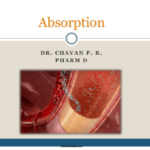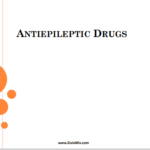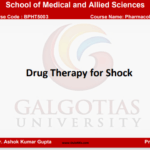INVESTIGATOR
BROCHURE
PRESENTED BY:
SADAF SALEEM
M.PHARM (PHARMACEUTICS) SEM I
SPER,JAMIA HAMDARD
CONTENTS
Introduction
Why are investigator’s brochure important?
General consideration
What is in an investigation brochure?
Contents of an investigator’s brochure
How is the investigator’s brochure regulated?
References
INTRODUCTION
The Investigator’s Brochure (IB) is a
compilation of the clinical and nonclinical data
on the investigational product that are
relevant to the study of the product in human
subjects.
It is a multidisciplinary document that
summarises the main elements of an entire
development programme to date.
It is written to enable investigators conducting
clinical studies to assess the risks and benefits
associated with an investigational product.
Why are investigator’s
brochure important?
It provides the investigators and others involved in the trials
with the information to facilitate their understanding with
many key features of the protocol, such as :
• Dose
• Dosing frequency
• Dosing interval
• Methods of administration
• Safety monitoring process
It provides the investigators with the information they need
to assess the appropriateness of the trial, including the
benefit-risk ratio in an unbiased way.
A SUMMARY FOR INVESTIGATORS, BUT
ALSO FOR STAKEHOLDERS:
The IB is primarily targeted at investigators,
providing information about the investigational
product, it is also used by independent ethics
committees when deciding on ethical approval of
conducting a clinical trial.
It can form basis for some documents needed for
regulatory interactions, such as, briefing
packages and summaries required when
applying for market authorisation.
It also has a number of regulatory uses:
example:
– It is a requirement for INDA in USA
– For IMPD and PIPS in Europe
Investigational Paediatric
medicinal product investigation plan
dossier submission
General considerations:
IB is a regulatory pre requisite that
sponsors(drug companies) must fulfill when
intending clinical trials.
It is specified in the efficacy guidelines of ICH
i.e ICH E6 guidelines for GOOD CLINICAL
PRCTICE.
IB should be presented in a:
-concise -balanced
-simple -objective
-non promotional form
A medically qualified person should generally
participate in the editing of an IB.
The type and extent of information available will
vary with the stage of development of the
investigational product.
If the investigational product is marketed and
its pharmacology is widely understood by medical
practitioners, an extensive IB may not be
necessary.
If a marketed product is being studied for a new
use i.e. a new indication, an IB specific to that new
use should be prepared.
The IB should be reviewed at least annually and
revised as necessary.
The sponsor is responsible for ensuring that an
up-to-date IB is available for the investigators.
What is in an investigation
brochure?
The IB should include:
Title Page: This should provide –
-the sponsor’s name
-the identity of each investigational product
(research number, generic names,
trade names)
-the release date
-an edition number
-a reference to the number
-the date of the edition it supersedes
Confidentiality statement: A statement
instructing the investigator to treat the IB as a
confidential document for the sole information
and use of the investigator’s team and the
IRB/IECs. IRB Institutional review board
IEC Independent ethics committee
Results: A compilation of results gathered
from clinical and non clinical studies of the
medicine.
Information: Background information on the
properties and history of the investigational
product.
Fig-SAMPLE
OF IB’S TITLE
PAGE
Contents of Investigator
brochure:
The IB should contain the following contents-
TABLE OF CONTENTS OF INVESTIGATOR’S
BROCHURE
(Example)
– Confidentiality Statement (optional)
– Signature Page (optional)
1) Table of Contents………………………………
2) Summary……………………………………….
3) Introduction…..…………………………………
4) Physical, Chemical, and Pharmaceutical Properties and
Formulation ………….
5) Nonclinical Studies………………………………….
5.1) Nonclinical Pharmacology …………………………
5.2) Pharmacokinetics and Product Metabolism in
animals……………………..
5.3) Toxicology ……………………………………………
6) Effects in Humans………………………………….…
6.1) Pharmacokinetics and Product Metabolism in
humans…………………..
6.2) Safety and Efficacy …….…………………………
6.3) Marketing Experience ……………………………
7) Summary of Data and Guidance for the Investigator…
2) SUMMARY
– Guidance for the investigators.
– Highlights important information, relevant to
the development stage of product.
– A brief summary(not exceeding more than two
pages) regarding the
– physical
– chemical
– pharmaceutical
– toxicological
– pharmacological
– pharmacokinetic
– clinical information
3) INTRODUCTION
A brief introductory statement should be
provided with:
The chemical name (and generic and trade
names when approved)
All active ingredients
Pharmacological class
Its expected position within this class (e.g.
advantages)
The rationale for performing research
The anticipated prophylactic, therapeutic, or
diagnostic indications
4) PHYSICAL, CHEMICAL, AND PHARMACEUTICAL
PROPERTIES AND FORMULATION
• It includes the chemical and/or structural
formula, and a brief summary should be given of
the relevant physical, chemical, and
pharmaceutical properties.
• A description of the formulations to be used,
including excipients, should be provided and
justified if clinically relevant.
• Instructions for the storage and handling of the
dosage forms should also be given.
• Any structural similarities to other known
compounds should be mentioned.
5) NON CLINICAL STUDIES
The results of all relevant nonclinical
pharmacology, toxicology, pharmacokinetic, and
investigational product metabolism studies
should be provided.
The information provided may
include the following:
• Species tested •Results, including the
• Number and sex of animals following aspects:
in each group – Nature and frequency of
• Unit dose (e.g. mg/kg) pharmacological or toxic effects
• Dose interval – Severity or intensity of
• Route of administration pharmacological or toxic effects
• Duration of dosing – Time to onset of effects
• Information on systemic – Reversibility of effects
distribution – Duration of effects
• Duration of post-exposure – Dose Response
follow-up
The following aspects are
to be included:
a) Nonclinical b) Pharmacokinetics and c) Toxicology
Pharmacology Product Metabolism in A summary of the
A summary of the Animals toxicological effects found
pharmacological aspects A summary of the after studies conducted in
of the investigational pharmacokinetics and different animal species
product, its significant biological transformation described under the
metabolites studied in and disposition of the following headings :
animals. investigational product. – Single dose
Potential therapeutic The absorption and the – Repeated dose
activity (e.g. efficacy local and systemic – Carcinogenicity
models, receptor binding, bioavailability of the – Special studies
and specificity) investigational product (e.g. irritancy and
Safety (e.g., special and its metabolites. sensitisation)
studies to assess The relationship to the – Reproductive toxicity
pharmacological actions pharmacological and – Genotoxicity
other than the intended toxicological findings in (mutagenicity)
therapeutic effect(s)). animal species.
6) EFFECTS IN HUMANS
ICH E6 specifies that information be
summarised on “metabolism, pharmacodynamic,
pharmacokinetic, dose response, safety, efficacy
and other pharmacological activities”
A summary of each completed clinical trial should
be provided.
a) Pharmacokinetics and Product Metabolism in
Humans
Information on the pharmacokinetics of the
investigational products should be presented,
including the following:
– Pharmacokinetics (including metabolism,
absorption, plasma protein binding, distribution,
and elimination).
– Bioavailability (absolute and/or relative) using a
reference dosage form.
– Population subgroups (gender, age, and impaired
organ function).
– Interactions (product-product interactions and
effects of food).
– Other pharmacokinetic data (results of
population studies performed within clinical trials.
b) Safety and Efficacy
It should include:
– Summaries of adverse drug reactions for all
the clinical trials.
– A description of the precautions.
– A description of the possible risks on the basis
of prior experiences with the product.
c ) Marketing Experience
– The IB should identify countries where the
investigational product has been marketed or
approved.
–Information arising from the marketed use should
be summarised (formulations, dosages, routes of
administration and adverse product reactions).
– The IB should also identify all the countries
where the investigational product did not receive
approval/registration for marketing or was
withdrawn from marketing/registration.
7) SUMMARY OF DATA AND GUIDANCE FOR THE
INVESTIGATOR
– Overall discussion of the nonclinical and clinical
data.
– Summarise the information from various sources
on different aspects of the investigational product.
– Provides the most informative interpretation of
the available data.
The main aim of the section is to provide clear idea
about:
– The possible risks and adverse reactions
– The specific tests
– Observations
– Precautions that may be needed for a clinical
trial
This understanding should be based on the
available:
physical
chemical
pharmaceutical
pharmacological
toxicological
clinical information on the investigational
products
How is the investigator’s
brochure regulated?
Regulatory authorities such as The European
Medicines Agency (EMA) and National
competent authorities (NCAs) require an up-to-
date IB for any medicine being studied.
An IB is submitted to the regulatory authorities
along with the Clinical Trial Application (CTA).
If the investigational product already has a
marketing authorisation (MA) the Summary of
Product Characteristics (SmPC) – or a package
leaflet or labelling may be used.
Regulatory authorities also review any updates
to the IB to ensure that it is accurate, complete,
and impartial
If a marketed product is being studied for a
new use (a new indication), an IB specific to that
new use should be prepared.
When relevant new information about a new
use is available, the investigators and Research
Ethics Committees (RECs) should be told.
References:
https://ichgcp.net/7-investigator%E2%80%99s-
brochure
http://www.trilogywriting.com/publications/investigato
rs-brochure-multidisciplinary-document/
https://www.eupati.eu/clinical-development-and-
trials/investigators-brochure/
http://www.ich.org/products/guidelines/efficacy/efficacy-
single/article/integrated-addendum-good-clinical-
practice.html
THANK YOU










